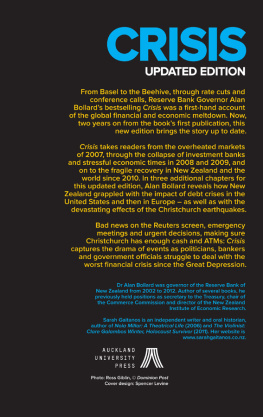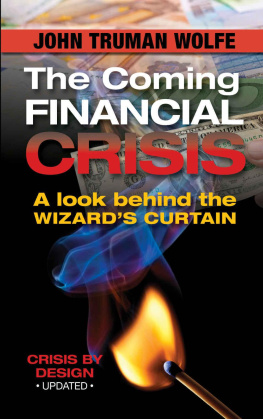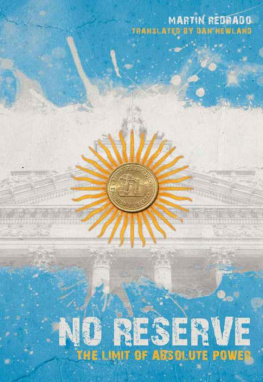Introduction
May You Live in Interesting Times
11 October 2008, Washington DC
It was a cold, rainy, gloomy October evening when finance ministers and central bank governors from the G20 countries had assembled in HQ2 Conference Hall of the international Monetary Fund (IMF) office complex in downtown Washington DC. For sure, the ministers and governors had not travelled to Washington for this special meeting of the G20; they were already scheduled to be there for the annual meetings of the IMF and the World Bank over the weekend.
The G20 meeting was a last-minute add-on, convened at short notice, to discuss the probable negative impacts of the present acute global financial situation on world growth. Given the uncertainty and turmoil of the preceding few weeks following the collapse of Lehman Brothers in mid-September, the anxiety of the finance policymakers to get together to exchange notes on what had happened and what would likely happen was understandable.
Brazil was the chair of the G20 in 2008. I received the meeting notice on 9 October, shortly before catching the overseas flight out of Mumbai. On the morning of the meeting, 11 October, when I was already in Washington, I got another mail from the G20 chair asking if I could be one of the two lead speakers in the second session of the meeting which would focus on the implications of the current turmoil for emerging markets. The Brazilian finance minister and the current chair of G20, Guido Mantega, much in the news in subsequent years for his strong position on the international currency wars, was the other lead speaker.
I was just over a month into my new job as governor of the Reserve Bank of India but I was not new to the IMF and World Bank meetings which are held twice a yearthe spring meetings in April and the annual meetings in September or October. As a mid-level official in the finance ministry in the late 80s, it was my task to prepare briefs to the finance minister and the finance secretary who would go for these meetings. As finance secretary myself since early 2007, I had attended these meetings as a regular delegate. The G20 was a later innovation but I was a little familiar with the set-up, having attended a couple of G20 meetings earlier that year in my capacity as the finance secretary; however, those were meetings of deputies (finance secretaries and deputy governors). This meeting, of finance ministers and governors, was a notch higher in the hierarchy. It was also, in the words of the convenors, an extraordinary meeting to discuss an extraordinary situation.
I was quite irritated by this late request to be a lead speaker. I was fatigued and jet-lagged, and my schedule for the day was clogged with meetings and appointments with a lot of stakeholders who typically gather in Washington during the week of these FundBank meetingspossibly wanting to get a measure of this unknown guy who had landed up as the governor of RBI. With virtually little time and even less mind space to organize my thoughts, my first impulse was to decline the request. But then ego came in the way. I was, by all accounts, a greenhorn governor, unknown to most ministers and governors; yet they chose to ask me to give the Asian perspective on what was turning out to be a ferocious crisis. I had to take on the challenge! My experienced support staff, efficient as they always were, cancelled a couple of appointments to slot a half hour to tutor me for the meeting.
An Anxious G20
Since the mid-1990s, the biannual FundBank meetings have also become a high-profile venue for protests spanning a wide array of disparate causesrepressive aid conditionalities, trade imperialism, climate change, gender discrimination, child labour, poor governance and corruption, as well as a host of other issues. Just as placards, slogans and hundreds of protestors from around the world have become a standard feature of these meetings, so has tight security, with the five or so city blocks that house the offices of the World Bank and the IMF cordoned off and several layers of security to ensure access only to authorized personnel. As a central bank governor, I enjoyed privileged security clearance; even so, going in and out was always quite a hassle and I tried to stay within the security cordon all through the business day.
It is standard practice during these international meetings for the Indian delegation to park themselves in the spacious office complex of Indias executive director at the IMF which is located in the HQ1 building of the IMF. The G20 meeting venue was in the adjacent HQ2. In other times, my inclination would have been to walk across to the meeting but since that would involve moving in and out of security, my staff navigated me through the basement tunnel connecting the two buildings.
By the time I entered the meeting hall shortly before starting time, I was still unsure about whether I could weave a coherent narrative from my jumbled thoughts. The meeting was organized around a large quadrangular table with the finance ministers and governors of the G20 troika (Brazil, the current chair; South Africa, the chair of the previous year, 2007; and UK, the chair for the following year, 2009) seated on one side while the rest of us occupied the other three sides. The ministers and governors sat in the front row with two deputies per delegation in the back row. The managing director of the IMF, Dominique Strauss-Kahn, and the president of the World Bank, Robert Zoellick, and their support staff too were present. It was a fairly large meeting with about 125 of us in there. The atmosphere was decidedly sombre with the usual pre-meeting banter unusually low-key.
After a brief introduction by the chair, the meeting rolled on with Hank Paulson, the US treasury secretary, giving an account of the hectic activity during the week and the weekend prior to 16 September when Lehman Brothers filed for bankruptcy, setting off tumultuous developments in the global financial markets. Although Ben Bernanke, the chairman of the Federal Reserve, was not listed as a lead speaker, Paulson had yielded to him. In his professorial baritone, Bernanke gave an account of the unusual measures that the Federal Reserve had instituted to inject liquidity into the financial markets which had gone into seizure, and outlined the bespoke solutions they were contemplating for some of the stressed financial institutions. The mike then passed on to Jean-Claude Trichet, the president of the European Central Bank (ECB) who explained, in his graceful, French-accented English, how the European banks, with large exposures to the US sub-prime assets and their derivatives, had come under pressure, how the contagion was spreading across Europe and what the ECB was doing to cope with the evolving situation.
The anxiety in the room was palpable. Already a lot of hands had gone up to comment or ask questions, especially directed at the US, but the chair decided that we should go on with the emerging-market perspective before opening up for discussion. Minister Mantega is reasonably fluent in English, but I noticed, after seeing him in several international meetings in later years, that he prefers to speak in Portuguese wherein he comes off more articulate and decidedly more forceful. Quite predictably, his comment, as the lead speaker, centred on the paradoxical safe haven effectcapital fleeing from emerging markets back into the US even as the US was the epicentre of the crisiswhich was destabilizing emerging-market economies and complicating their macroeconomic management.













